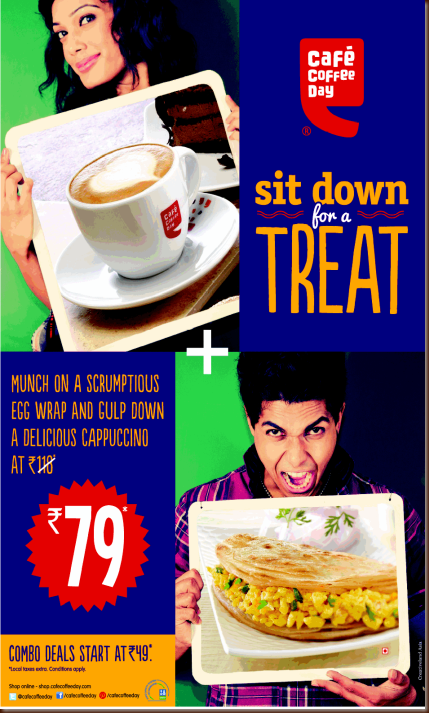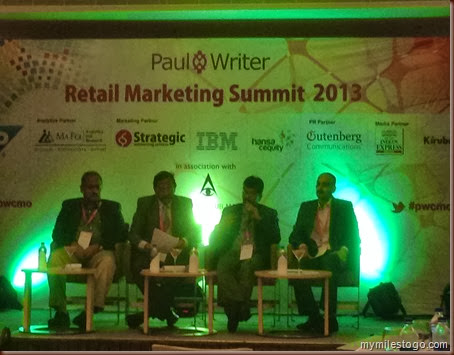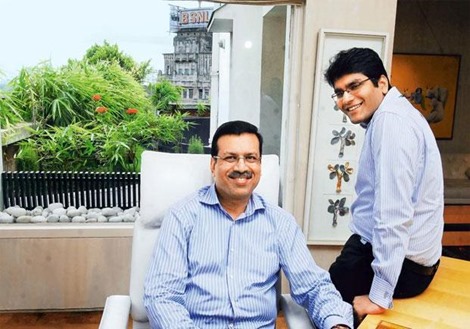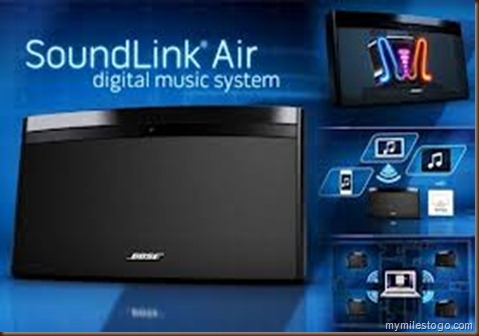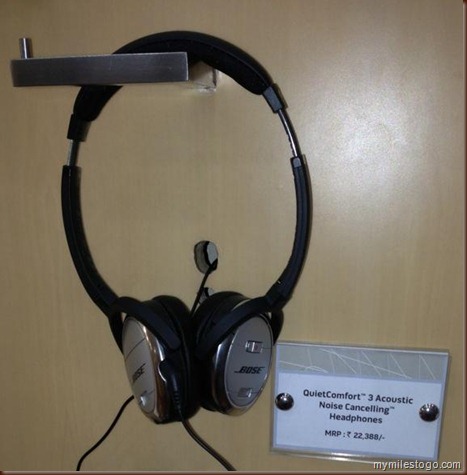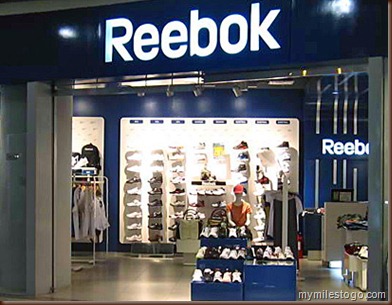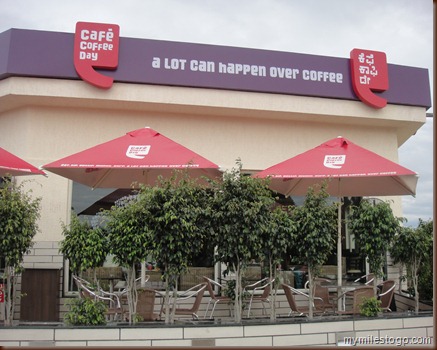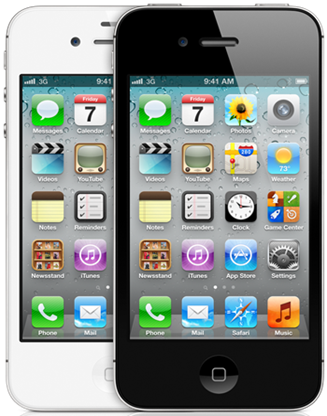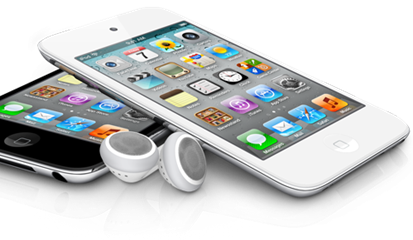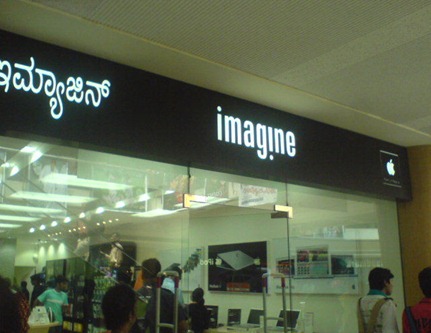17 October, 2016
Chennai Shopping Festival
07 November, 2013
Should Cafes Advertise?
I came across two special offers by India’s leading café chains Café Coffee Day and Barista today. One was through a email campaign – Buy One (Cappuccino), Get One Free. And the other was on newspapers – a combo offer of a Cappuccino and Egg Wrap at a discount of over 35%. And this was not an isolated case – both these café chains have been advertising in the mainline media for quite a while now and have also been continuously offering discounts over the past couple of months on their products. And all this for attracting footfalls into their cafes. with the onslaught of new café chains such as Starbucks over the recent months and those such as Gloria Jeans, Costa Coffee and other regional café chains, this space has been witnessing active poaching of customers. However, the regulars haven’s shifted loyalty, and that’s in the proof of the pudding. If that were the case, monthly sales of these chains fluctuate quite much, which has not been the case.
The biggest effort for cafes, contrary to what we believe is not just retaining existing customers but attracting new ones as well. CCD, as it is popularly known has followed a deep penetration strategy in large cities like Bangalore (where it is headquartered), Mumbai, Delhi, Hyderabad, Chennai and Kolkata. There are over 8-10 cafes of CCD within a 3 sq. km radius in Bangalore and all cafes are full with guests in peak times. Chennai, the hotbed of the South Indian Coffee culture has grown slower for CCD than other cities. That’s perhaps because the iconic Filter Coffee available in regional restaurant chains such as Saravana Bhavan, Ananda Bhavan, Vasantha Bhavan, to name a few are just unbeatable. The modern cafes also do not prepare the filter coffee and are more popular with the Cappuccino, the Latte, the Americano, the Espresso and ofcourse the cold coffee varieties which are difficult to replicate and are not easily available at other restaurants. Barista, which has slowed down its growth over the past three years and has focused on store profitability rather has been a pioneer of the coffee culture in the North, especially in Delhi. It has also been heavily advertising especially in conjunction with India’s leading newspaper Times of India about various offers.
So, this set me out thinking, “Should cafes advertise?”
The first answer that comes to my mind, is Yes, indeed they should. Every company must advertise its products and services through relevant media to their target customers. There are two kinds of advertising, I would say. One is the Corporate form; CCD came up with its campaign “sitdownism” a few months bacj which was an instant hit among the youth and was well appreciated within the Advertising faternity. And the other is advertising its products and services. But then, for cafes, in my opinion, being present in a locality is itself the best form of advertising. The store itself is an advertisement (and holds true for other retail formats too). Be it Malls or High Streets or Airports, Café are often point of direction or a meeting place. CCD at Bangalore Airport is located in a very prominent place such that no one can ever miss seeing it. Same applies for Gloria Jeans at Hyderabad Airport. However, At Delhi Airport’s T3 Terminal, Starbucks is quite tucked away and is almost missed by everyone.
The café should rather focus on the following to retain customers and to attract newer ones mainly through word of mouth;
- Ambience
- Convenience
- Familiarity
- Consistency
- Quality
These are some factors which potential customers would consider before they step into the café for coffee and conversations. Most of them, even college kids who are the most targeted for such cafes do not like to indulge on products that are heavily discounted. Or would like to be seen in places which are positioned as being “discounted”. I would wonder then, why do cafes scream so loudly that they have products which are “discounted” and gain adverse publicity. A satisfied customer would get ten more, goes an old saying. Cafes would do better in attracting newer customers if they provided top quality Coffee and other Food & Beverages to its customers with consistent quality and convenience (Read: Furniture, Sofas, Chairs, Plug points for Laptops, Wi+Fi, toilets) and make the place a familiar one for them to revisit. Afterall, cafes are meant to be the third alternative place after Home and Office and hence need to be the first point of recall for customers to walk into.
22 October, 2013
Luxury at a Discount!
It’s a misnomer that Luxury Brands do not discount. Of course, they do. Just that they don’t do it so loudly and obviously as other premium and streetwear brands. Except for brands such as Louis Vuitton, Rolex, Mont Blanc, to name a few, most other premium brands promote discount sales, albeit succinctly. In most cases, they are not at their own stores but at cozy 5 Star Hotels, where the Brands hire banquet halls and quietly carry on with their business. Even then, they need to communicate what’s on offer and choose smartly created advertisements and place them on national dailies. The purpose of hosting these so called “Exhibition cum Sales” is to ward off the junta crowd, most of them being on-lookers. The moment the venue is a Star Hotel, window shoppers would think twice to drop over. It doesn’t look nice, quite obviously to take a public transport to such a venue. Secondly, shoppers still feel intrigued to browse and shop in star hotels, traditionally where luxury products are being sold world over, with India not being an exception.
The other genuine reason is also that we do not have high quality luxury retail spaces in India except for the DLF Emporio Mall in Delhi, the Palladium in Mumbai and the UB City in Bangalore. While there is a small hub by the name Bergamo in Chennai (at Khader Nawaz Khan Road), the RPG Group is coming up with a luxury destination in Kolkata. Apart from these, there are hardly any retail spaces that fit in to the luxury brands’ portfolio. And that’s precisely the reason such Brands choose 5 Star Hotels as venues.
Over the weekend, one such event was hosted at The Westin, Chennai. Prada shoes for Rs. 25,000, Fendi belts for Rs. 15,000, Gucci Wallets for Rs. 18,000 and much more. Yes, these are apparently discounted prices. At 11.30am, on the only day of sale (being a Sunday), the room was full of discerning customers. Though there were hardly a few pieces in each line, most of them were being bought by those who had dropped in. Many of these brands are not available at Retail Stores in Chennai and shoppers have to travel either to Delhi or Mumbai or probably outside of India to get one for themselves. The smart sales team were even wooing visitors with catalogues, taking orders thereby fulfilling sales orders. The display of items was not as what one would expect in a Retail Store for such products, but perhaps suited well for the “Exhibition” theme.
I tried on the Prada loafers, size 11, but felt it was too tight. As is always the case, the prices were not mentioned on the items, be it wallets or shoes and many people who are price conscious would rather not dare ask for prices, unless they were sure to buy!
India needs varied Retail spaces. What we have now are either too large malls that cater to the middle class or star hotels that house Luxury Brands. We do not have suitable spaces for luxury brands. Malls chains like Phoenix Market City are cordoning off certain areas within the mall for luxury brands. Express Avenue, the only Mall of over a million square feet in the hart of Chennai has created a nice mix of brands. Its so secluded that regular shoppers don’t even pass by that side.
In the meanwhile, keep looking for advertisements in newspapers like the one above. You may be able to get a good deal on your favourite luxury brand in town!
21 September, 2013
Is there something as a Click-Only customer?
I was recently invited to attend the first edition of the Retail Marketing Summit Chennai, organized by Paul Writer, a leading consultancy which works in the Marketing space and advises various enterprises. The day was very exciting, with speakers from various Retail companies and Brands expressing their opinions. During the course of discussions, there was a topic which was discussed elaborately by the esteemed panel of guests as well as the audience. The topic of discussion was, whether there was someone called a “Click-only customer” that existed, who shops only online. There were ayes and naes but there was no single answer that could be fully validated. On the need for having an online presence and also focusing on the internet commerce business, Mr. Pattabhi Rama Rao, President of Australian Foods, which runs the Cookieman chain of stores felt that the market is too small at the moment on the internet and Retailers should continue to focus on the offline business by providing a better customer experience. In his own words, Man is a social animal and social interactions would never cease to exist. Pattabhi should be knowing well. With over a dozen years behind him in the Hospitality business, he started off the Cookie business 13 years ago. His brand of cookies were priced 10 times as that of a normal biscuit, although such a comparison is odious. He continued his focus in the business and now has over a 50 stores across the country. Most of his outlets are located in prime locations in Malls and Airports. Many of them bake fresh cookies at the store and the aroma spreads all over. It appeals to the senses and therefore converts a passerby into a customer, a customer into a loyalist and a loyalist into a brand ambassador. However, there is indeed an opportunity to sell categories like cookies online, although they are restricted to gifting and occasion based purchases.
In another panel discussion, Calvin John of Caratlane.com which specialises in the sale of jewelry products said that a customer has purchased 35 times in a few months from their site. And he felt that there were a small but growing species of “Click-only customers” who shopped extensively online. Jessie Paul, the convener of the event and also a moderator in one of the sessions confirmed this and said that she shops grocery extensively online at BigBasket.com, a Bangalore based start-up which has been slowly but steadily growing its online-only grocery business. With more and more people shopping online, it is all about convenience and discounts? Would the charm of shopping (at Retail outlets) dwindle over time? There are references to the West and how things have been changing in developed countries. A lady from the audience says that at Macys.com, sales were 37% of the total compared to just 26% in the previous year during the holiday season. And this was countered with a view that the sales increase was only during the Holiday Season when Macy’s was very badly organized at their stores. In India, the Books category was the first to succumb. Customers (in India) bought books online from Indiaplaza, Flipkart, eBay and the likes not just for convenience but also due to the generous discounts that were being doled out. But for those discounts, would customers have bought online? Perhaps yes, but a majority would prefer browsing and buying at their favorite books stores down the road such as Crossword.
The Internet Commerce business in India is still too small compared to the Offline one. As it is, Organized Retail in India is just under 10% of the INR 200,000 Crores market size. And e-commerce accounts for a decimal percentage of that. Although online retailers are showing double digit growth year on year, the business model is largely led by discounts and there is no hypothesis at the moment to prove that shoppers would still buy online at full prices, except for the gifting and essential categories. In my opinion, there is room for online and offline Retailers, But the bigger growth is offline, given the levels of broadband, internet and computer penetration in India. Payments gateways for credict cards, debit cards and Net Banking is quite limited too. In fact, I would place my bets more on m-commerce - shopping on smartphones which is still an untapped category. So, if you are a Retailer or a Brand, do build an internet commerce site now, if you already don’t have one. But remember, Retail is all about customer experience, and there is no better place than the store to demonstrate it.
13 May, 2013
Shaswat Goenka–Hearlding new frontiers at Spencers Retail
After dabbling with various sectors in the Rs 14,000-crore RP-Sanjiv Goenka group for about a year, Shashwat Goenka, 23, son of group chairman Sanjiv Goenka, has taken charge of Spencer's, the retail chain, from April 1. In an interview with Namrata Acharya & Ishita Ayan Dutt of Business Standard, he talks about his personal mandate and the road map for the Rs 1,400 crore business. Edited excerpts:
What goal have you set for Spencer's?
I assumed the role of sector head from April 1. What is most important at this point in time is profitability; that's where we are all trying to go. That will be the focus for the coming year and the year after. Spencer's is aiming to deliver Ebitda (operating earnings) breakeven at a company level in the third quarter of 2013-14 and be Ebitda-positive on a full year basis in 2014-15. That's the overarching short-term goal.
Spencer's has missed its breakeven deadline quite a few times. What makes you think you would be able to achieve it?
Well, each time we have done better. We have achieved breakeven at store-level but company level is what we want to achieve.
How do you plan to get there?
We want to increase our footprint. We will go up to two million sq ft from 900,000 sq ft currently and will expand in the north, east and south over the next four to five years.
We will achieve it over the next few years. The other important thing, obviously, would be operational efficiency.
In terms of offering, we would look at increasing international foods and regional foods. Value-added fresh is one of the areas we would like to explore.
Doesn't the fresh segment have one of the lowest margins?
We have very good margins in the food business compared to our competitors. Margins in apparel are obviously much higher but our margins in foods are good.
Any new formats for Spencer's on the anvil?
We haven't thought of any. We want to grow in hypermarkets.
Is the rationalisation process for Spencer's over?
Last year was the rationalising and consolidation process. We have exited Pune. In the past two years, we have closed 65 stores. Now, we want to start growing and in the hypermarkets.
Earlier, we had hyper, super, daily and express stores. Now, we have hyper and dailies and a few of the old express stores are still functioning.
Why did you exit Pune?
We wanted to become stronger where we are. So, we wanted to focus on the north, south and east. After we get that strong, we will revisit the west.
Why do you think the response from foreign retailers has been muted, after FDI (foreign direct investment) has been cleared?
I think people are interested. They just want to figure it all out before they come in.
Do you see foreign retailers as a threat to Spencer's?
Walmart and its likes coming in will help us. We can learn a lot from them. Back-end infrastructure will improve. There are basic infrastructure issues in India, like roads. Also, cold chains or dairy chains, for instance, are not very well developed.
A lot of options were being explored at the back-end by retailers. Any progress on that front?
We are open to FDI at the back-end but we haven't been approached by anyone.
Spencer's was exploring the IPO (public share offer) option. When is it likely?
That's something we definitely want to do but right now, the focus is on profitability.
Would you look at getting into the cash and carry format?
We have not looked at it. We want to be profitable and then explore other things.
17 March, 2013
EMIs are a way of living for the nextgen
I am not too surprised to see the two main distributors for Apple in India, namely Ingram and Redington jointly releasing full page Ads to promote the iPhone 4S and iPhone 5 in daily newspapers. There has been a huge Marketing blitzkrieg in this regard since Jan. 2013. No wonder, sales of Apple’s latest smartphones have seen a jump of over 100% across various Retailers such as Croma, EZone, etc. Until the launch of iPhone 5, Apple used to bundle their newest smartphones exclusively with mobile operators such as Vodafone, Airtel, Aircel, etc.Which means if a customer is not on one of the networks that has been bundled with, then he cannot buy the phone (one has to buy it with a particular network and then use the number portability option). All these changed with the launch of the iPhone 5 in India. During this time, Apple decided to release their phones to the broad trade channel through its two national authorised distributors mentioned above. Which meant that the iPhone 5 was readily available across major retail stores in the country right from its day of launch. Although there was an initial demand-supply mismatch, this was corrected soon. Apple executed the same flawlessly once again with the launch of its iPad Mini. What was more attractive is that these smartphones are available at attractive EMIs, for as low as Rs. 2,376 per month for 12 months along with a down payment of just Rs. 16,990/- The recent newspaper ads have drawn thousands of footfalls to Retail stores that stock and sell the iPhones. Although Samsung started this trend in 2012 for its Galaxy range of smartphones, the scheme has become more popular thanks to Apple’s initiative.
Recently, India’s top car maker Tata Motors launched a marketing promotion for its Nano range of cars. The Tata Nano which was launched with much fanfare a few years ago remains to be the cheapest car in the world with its base model touted to cost less than USD 3,000 (Rs. 1.50 lakh). The car didn’t take off well initially due to its stripped-down features but a prolonged grim economy forced fence-sitters to downgrade their purchases and this car seemed to fit the bill as far as a comfortable city drive was concerned. However, sales had come down still more over the past months. From 9,000 – 10,000 units a month in its hay days, sales have been hovering at about 2,000 units a month of late. So, the company decided to launch an EMI Scheme which is hassle free. At a equated monthly installment of Rs. 8,333 per lakh, a prospective customer can swipe his credit card from various banks such as ICICI, HSBC, Axis, Standard Chartered and Kotak Mahindra to avail this offer across dealerships. Add another Rs. 6,500 for fuel every month. Effectively for Rs. 15,000/- one can own and drive around comfortably with a family of four in the city in a small car such as the Nano. The initial market feedback seems to be good although one needs to wait and watch how things go along in the medium term. This is one of the most innovative promotions that the Indian Automobile industry has seen in recent times.
The younger generation which lives on what they earn today rather than save boatloads for future is spending happily on such promotions. I have personally observed so many of them earning less than Rs. 6-8 lakhs pa carrying such smartphones and showing off their ability to own them to those around. After all, their cost of acquisition is as low as Rs. 3,000 per month. They are probably cutting down their spends on other discretionary spends such as travel, food, cinema etc and rather investing on a wonderful smartphone for themselves. For a large middle class that thrives on day-today commute on their two-wheelers (the size of the Indian two-wheeler market is over a million vehicles a year), it is always a dream to travel in a four-wheeled vehicle, atleast on holidays and weekends when the entire family is outing. And such promotions actually help satisfy their needs. What needs to be seen is how long these promotions could sustain. For example, the typical target customer who would buy a Nano is one who is in the lower middle class and with the car being his first four-wheeler. But would he have a credit card to buy the car? If yes, would he have a credit balance of a few lakhs in his account, given that the entire money would get blocked if he had to swipe his card for purchasing a car and may not be left with any credit for other regular expenses such as monthly grocery, fuel, dining, etc.
Whichever way, the next-gen is hapy to live on EMIs. And Retailers should be happy!
20 February, 2013
For better conversions, provide solutions!
A couple of days back, I had a meeting in the city (Chennai, where I live three days a week when I ain’t travelling!). The host was willing to meet anywhere and after a lot of careful thought, I fixed it at Ispahani Centre at Nungambakkam, assuming it would take me an hour from the Royal Enfield factory/office in Thiruvottiyur to drive down to. As planned , I reached on time and we met at a café and spoke for an hour about business prospects. The location is not actually a Mall but a kind of community centre that was built almost 15 years ago, one of its kind to come up in the city. Many Retailers and brands such as Mr. Kishore Biyani’s The Future Group, Gaitonde, Florsheim, to name a few, put up a shop or two here and vacated sooner than later for various reasons – some for lack of relevant footfalls and some for high cost of operating. Whereas Café Coffee Day, India’s largest coffee retail chain has been operating here for over 14 years now; ditto for Marrybrown, a concept similar to KFC that serves Burgers and the like with specialty fried chicken on the menu. I finished the meeting on time in an hour and was heading out when I noticed another iconic brand which has quietly been operating here for well over 10 years. It used to be perceived as one of the most expensive brands till until recently they have started making products that are affordable even to the aspiring middle class lot like me. Their “sound” is probably one of the best although there are many more premium sound systems in the world. And the brand I am referring to is non other than “Bose”.
How many of you there knew that the name of the brand is also the surname of an Indian! Yes, indeed. Bose Corporation was founded in 1964 by Dr. Amar G. Bose, professor of electrical engineering at the Massachusetts Institute of Technology. His graduate research at MIT led to the development of new, patented technologies, and at MIT's encouragement, he founded his own company based on those patents. Bose Corporation established itself by introducing the 901® Direct/Reflecting® speaker system in 1968. With this introduction, Bose achieved international acclaim by setting a new industry standard for lifelike sound reproduction. The list of major technologies emerging from Bose continues to grow. Award-winning products such as Lifestyle® home theatre systems and the Wave® Radio/CD have reshaped conventional thinking about the relationship between an audio system’s size and complexity, and the quality of sound it produces. To know more about the company and its products, click here.
Coming back to the incident, I walked in to the store to find about about the Bose Soundlink™ Air which they have been advertising quite a bit these days. This product seems to connect using wifi with any apple device such as an iPod, iPhone or an iPad. So, I got into the topic directly with the sales staff who came across to be affable and knowledgeable about what he was speaking – a rarity these days especially in the Electronics Retail business. He explained about the product, gave a demo with my own iPhone 5 and was patient to showcase other models as well. At the end of it, I was a bit disappointed as the product was not a complete package. It didn’t have built in Bluetooth™ to connect other devices and the Bass effect was minimal. I explored a couple of other models but none of them suited my requirements. And so, I thanked him for his efforts and efficient demonstrations and started to move out when I noticed the headphones display. I already use a noise-cancellation Apple earphone on my iPod which I have been using continuously over the past few months. It’s a welcome relief since the external noise, especially that of an aircraft is almost unheard while in use. Ofcourse, it has its own disadvantage. One that it gets less white as the days pass by and the other is that since it locks itself inside the ear, at times it aches a bit.
The guy at the Bose store explained that the Brand has a special technology by which all mechanical sounds – any noise produced by an electronic / mechanical machine will be cut off once the head phones are switched on. I played “Comfortably Numb” by Pink Floyd from the demo iPod which they had and… Whoa! This was one of the best inventions that I had discovered. At Rs. 22,000 (USD 420), it wasn’t cheap either but I was too tempted to buy. After all, I have been longing for a great headphone for quite some years now. In my office job, I need to travel 3-4 days a week, usually 2 or 3 flights for over 2 hours each and road journeys of over 300-500km a day. And what better than hearing some soothing music all along.
The entire conversation with the guy at the Bose store lasted for over 30 minutes or so and he never once prodded me to “buy” their product directly – subtle inferences such as “When do you plan to buy this Sir?” “Take your time to decide because it is a worthy investment” “Apple devices are best heard on a Bose” to name a few. I was willing to wait and ask my wife to bring it along from London when she returns in sometime but the thought of owning a piece of marvel, a piece of history was too much for me to hold on to. Bingo – in the next few moments, I was having one on my hand for demo – billing done in less than 4 minutes flat. I have always been an impulsive shopper when it comes to technology albeit after a lot of thought and research & this wasn’t any different.
What hit me was the way the guy at the Bose store handled the Sale. He didn’t sell the product, not even the experience, but just like how a real staff of Apple provides you a solution – that’s what he did. I was walking back with a gleaming smile on my face, happy about my purchase. And that set me thinking.. If only retail staff were to stop selling and start providing solutions to customers… As the flute music of Pandit Haripraad Chaurasia reverberates on my ears through a Bose Quiet Comfort 3 as I write this column. Bliss.
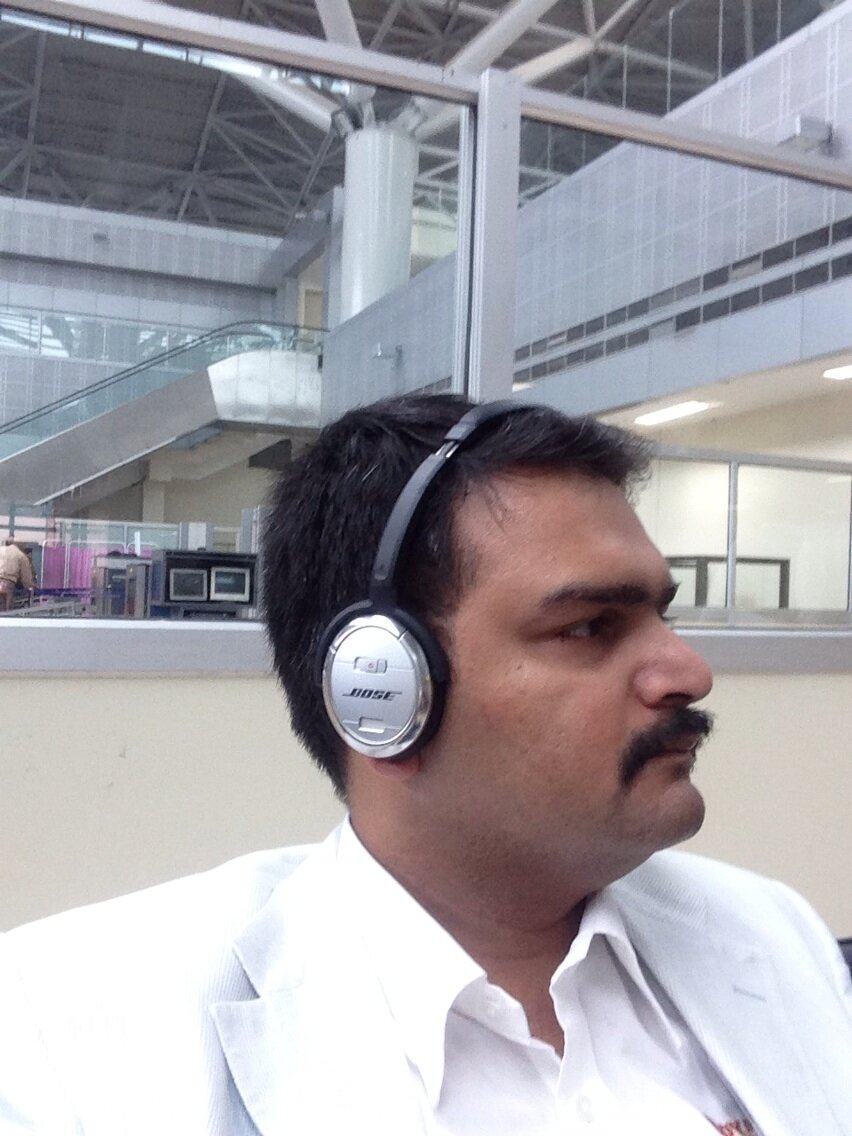
24 May, 2012
The Dangerous Minimum Guarantee Model in Retail Expansion
Aggressive store expansion means two things – heavy capital expenditure and lots of people to manage the stores. Every brand worth its salt wants to boast an extensive Retail store network across the length and breadth of the country no matter what the store level EBITDA is. While there are various ways to expand its network, some of the commonly used ones by Retailers are Franchising (more on that in my next column) and CoCo – Company Owned Company Operated model. While Franchising could mean faster expansion, there are chances that the Retailer may lose control on the quality of customer experience among other things. The CoCo model is very expensive to scale-up unless backed by a solid VC / PE Firm. One of the other means to raise funds for expansion is through the Capital Market – recently Specialty Restaurants that runs the Mainland China, Oh! Calcutta, Sigree and other restaurants debuted their IPO, the first of its kind in the F&B Industry in India (while Jubilant Foods which runs Dominos Pizza in India is also listed, it is not in the Restaurant business but into Casual Dining). Retailers like Café Coffee Day, Dominos, Foodworld, Spencers, Zara, Tommy Hilfiger and many others have invested heavily on their own in terms of store expansion across the country, while others like McDonalds, Pizza Hut, Madura Garments, Reebok, Adidas, Benetton, Nilgiris, etc. have taken the Franchisee model.
There is another alternate model – One of the easiest ways that a few Retail Brands have taken to, which is known as the “Minimum Guarantee” model where in a Second Party is appointed to manage the store(s) on behalf of the company while the Retailer itself invests on the business. Let me explain this in detail. Assume that the store fit-out costs for a 1,000 sft store is Rs. 40 Lakhs plus stocks to the tune of Rs. 50 Lakhs, then the Retailer invests Rs. 90 Lakhs to set up the store and also bears the Security Deposit to the landlord (6 – 10 months’ monthly rent). Once the project work is completed, the store is handed over to a second party, also known as a Managing Partner or a Managing Franchisee who is responsible for the day-today upkeep of the store. All direct and operating costs such as manpower, electricity, rent and incidental costs are taken up by the Retailer and the Partner is also paid a lump-sum ranging from a few thousands to a couple of lakhs – just to operate the store everyday. The logic is, if there were to be an Area Manager to micro-manage the store (and a cluster of them in each city / region), then the costs would be substantially high. And hence the Managing Franchisee model. The partner also has sales based incentives, that is if the store achieves a set target, then he receives a further commission, usually as a percentage to sales. In many cases, the Partner leases his own property to the Retailer, which means the Rental income comes back to him! In a few cases, either the same partner operates through kith and kin or through friends and relatives who become partners! And then, there are incentives for introducing new partners and locations in other cities. This is indeed a vicious cycle.
In the name of faster expansion and quick growth, many Retail Brands have resorted to this practice. While there is nothing wrong in this approach, the Managing Partner usually gets the cake and eats it too. Without any investment, he has a full time job, a respectable retail profession and a handsome income too. While it is not clear whether the practice has been globally prevalent and if yes, from when – it is quite popular in the Indian Retail scenario over the past decade. While Retailers like Madura Garments have stuck to the tested Franchise model of “Buy and Sell” merchandise (that is the Franchise has to purchase all the merchandise with a small percentage of returns back to the company), others like Reebok, according to press and media releases in the recent past have opted the Management Partner model.
There is no correct or wrong way to expansion. As long as the means are ethical and law-abiding, there is no problem. But concerns arise when there is maniacal expansion with sometime, ulterior motives of helping / supporting some known people to become Management Partners. At the end of it, the Customer decides on the success or otherwise of the brand. And that’s what matters.
04 May, 2012
Apple–Smart Product or Smarter Retailer?
After a lot of careful consideration over the past few months, including reading various literature online and discussion with friends and users of the iPhone, I finally decided to take the plunge. Yes. Now I own an iPhone 4S 32 GB. So, what? Actually. It is just another phone, in my opinion. It is indeed a true case study of how an ordinary product can be made an extraordinary success with simple, yet effective Marketing. One must learn from Apple in this regard. Much has been written about the technical specifications, uniqueness and superiority of the iOS of the iPhone, the Siri and various other features and hence I wouldn’t delve into it. Nor am I a technology expert to rip through comparisons with an Android phone (from Samsung or HTC ) or a BlackBerry or a Windows Phone. Oh yeah, by the way there is Nokia too. Apple iPhone 4S, for me lacks some basic stuff – such as a favourite tune as an alarm; select many / select all in the email box to delete and many such small features. Wonder how the Apple engineers skipped these and a bigger wonder that Apple Marketers kept them low-key, promoting various other features. It is a good smartphone but can be a lot better. Will leave it there.
10 days ago, I ordered my iPhone online – through www.indiaplaza.com where I work. Not just because of a particular loyalty – but also because of the Price. The phone is about Rs. 2,000 (USD 40) cheaper while buying online, compared to the ones sold at an Apple Store or other Electronic Retail chains such as Croma (from the house of Tatas), Ezone (part of the Future Group), Reliance Digital, etc. Two months ago, I bought an iPod Touch (also from www.indiaplaza.com) and the price online was a lot cheaper – I got a 10% discount while the company was celebrating the birthday of Apple founder Steve Jobs. In my view, the iPods, iPhones and iPads should also be sold through Department store chains such as Shoppers Stop and Lifestyle too. After all, it is indeed a lifestyle product as promoted by Apple and not just merely a gadget. The Apple stores are more a novelty than being electronic stores. They are a lot more engaging, inviting and most importantly (well stocked). And I am referring this from an Indian context.
I visited the Apple Store twice in a span of two months to buy accessories for my iPod and iPhone. Every time, the staff have delighted me. They speak little, but with a lot of sense. I have already bought Rs. 10,000 (USD 200) worth accessories from the Apple Store and I believe it is only because of the wonderful staff interaction that I have had each time. On the first instance, I wanted to buy a case and screen guard for my iPod and the staff showed me gladly all the varieties that they had – without indicating any obligation on me to buy. I walked up to two nearby stores that also sold mobile accessories to check out what they have – at one store, the staff was busy canoodling with his girlfriend (I guess) on the phone and had least interest or respect for the customer who came to spend money. At another store, they had stocks for every damn model but an iPod. The staff felt sorry but couldn’t offer anymore. I came back to the Apple store and ended up buying from there. I repeated my visit a month later – this time to buy a screen guard and a case for the iPhone. I visited various other electronic retail stores who didn’t stock them, and were more interested in selling larger items such as LCDs, Washing Machines and Refrigerators. Even Croma, which is known to stock a wide range of accessories wasn’t carrying anything specific for the iPhone.
Back at my favourite Apple store at the Forum Mall (Bangalore)m Simran, the sales assistant was not just being polite and interactive but was also non-obtrusive. She allowed me to have a look at things, touch and feel them and never got perturbed by the questions that I enquired regarding the various options. She was happy to answer as many and even offered a few ideas such as a “Matt-finish” scratch guard that would not leave traces of oil from the face and which is easy to wipe off. She suggested a case that not just matched with the phone but was sleek and had a good form factor. Amongst other things, she also showed a few headphones and a couple of JBL speakers. And eventually, I ended up buying a noise-cancellation Apple ear phone worth a 100 dollars (Rs. 4,800) which was completely unplanned! All in a span of a few minutes. Now, that’s what I call “engaging customers” smartly. She knew my preferences for music, realised I had an iPod Touch and an iPhone and that I could, most importantly – appreciate and enjoy the stuff that they make and sell. Hats off to their level of knowledge and customer service. Next on my list: JBL Speakers for the iPod.
I have been using a Samsung Galaxy Tab for the past one year and a BlackBerry for over 3 years. Its been just over two weeks since I have been using the iPhone. Happy with it. But would go back to my BlackBerry any day. I am just that. But all said and done, Apple is not just a product maker but also a smart Retailer. With its unique offering of products, they seemed to have mastered the art of letting customers engage with their products. Single Brand Retailers have a lot to learn from them. Of how not to sell, but to make customers buy the products. And appreciate them all their life. Kudos Apple.
26 February, 2012
eCommerce in India -
A Firefly finally takes off
Monday - 22 Jan. ‘24 is a very important day in my professional life. I complete eight months today in my role as Executive Vice President a...

-
12 December is celebrated annually as Retail Employees Day, an occasion to thank the frontend staff who have taken up Retail as their pref...
-
The world is split into two for the last week or so, ever since India’s self-made billionaire and tech mogul Mr. Narayana Murthy (NRN) said ...
-
It’s been over 5 months since I wrote anything on this blog, especially. Not that I didn’t have anything to observe, even better to share my...


